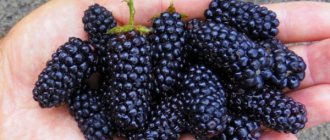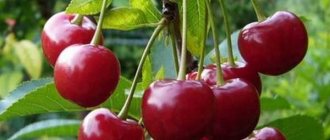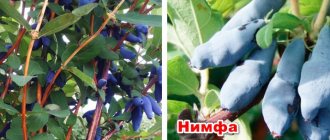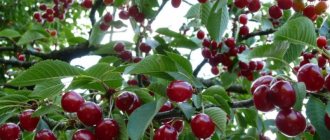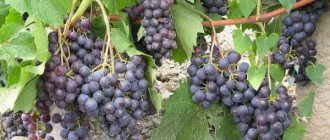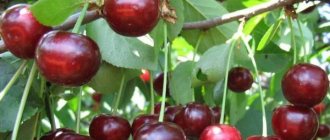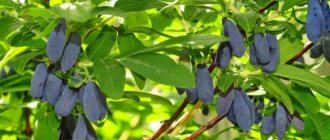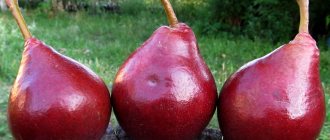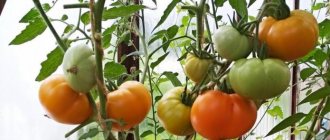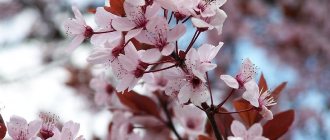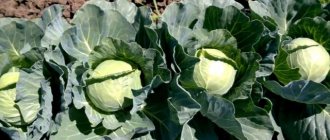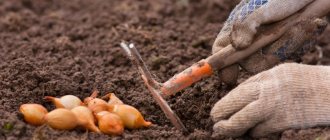Ezhemalina is not a traditional berry crop, like, for example, raspberries. Even blackberries, which are not very common in Russian gardens, can be found much more often. This is understandable, since a hybrid of two plants appeared in the country relatively recently, although it was first obtained back in 1881. Using it as a mother plant, breeders for many years continued to work on selecting the best varieties of raspberry, which combined the best qualities of the parents:
- high yields (up to 8 kg per bush);
- large fruit;
- frost resistance;
- unpretentiousness;
- pleasant taste;
- benefits for the body.
Ezhemalina Tayberry variety description
"Tayberry" is a hybrid that was bred in 1969 by breeders from Scotland. They pollinated the Aurora blackberry with pollen from raspberry flowers. The berries of the hybrid have a very good taste, they smell nice, the plants are easy to grow and easy to care for. Large purple-violet berries grow up to 6 cm long. From one hundred square meters you can collect up to 90 kg of berries. Ezhemalina grows as a tall bush up to 2.5 m, covered with small thorns. Berries can be picked from mid-summer to late autumn. The variety is very resistant to diseases and pests.
Description of Tayberry
Ezhemalina Tayberry is actively distributed in North America and Western Europe. It is there that it is grown on an industrial scale.
The climate conditions of those regions make it possible to obtain about 20 tons of healthy berries from 1 hectare. Our climate allows us to harvest a smaller amount of crop, but for our own needs this is quite enough, because one bush produces at least 3 kg of berries.
Ezhemalina Tayberry reviews
The bush of this plant is represented by creeping shoots that reach 3 m in length. Their structure is very flexible and strong, which allows it to be intertwined with wire in the summer and rolled up when it gets cold.
Shoots that are ripe for fruiting immediately acquire a burgundy color, but young shoots are painted green. Each of them is strewn with soft thorns.
The fruits are ruby in color and oblong in shape. Their length can reach 5 cm, and their weight is 10 g. The foliage has a trifoliate corrugated structure and a dark green color. The flowering is large and white.
Ezhemalina of the described species is a hybrid bred by breeders by crossing blackberries and raspberries.
Expert opinion
Yulia Yurievna
I have a large garden and vegetable garden, several greenhouses. I love modern methods of cultivating plants and mulching the soil, and I share my experience.
Ask a Question
According to reviews of Tayberry, the described plant has both positive and negative sides. Before you start planting such berries, it is better to learn about the characteristics of the crop. Among the positive aspects of the described plant is good productivity. A well-groomed, healthy adult bush can produce up to 7 kg of berries. Tayberry bushes do not have strict soil requirements and they winter well and tolerate frosts well. Harvesting from the described plant is not too difficult, because there are no long prickly thorns on the shoots, only small and soft ones. This feature greatly simplifies the care of raspberries. Plants practically do not get sick, although it is better not to neglect preventive measures. These include keeping the plantings clean, timely sanitary pruning and spraying with complex fungicides during the annual disinfection of the garden. The berries, according to reviews, have a very pleasant taste, and the smell is reminiscent of the aroma of confectionery. Also, significant positive qualities include the size of the fruit. The berries tolerate transportation well. Negative qualities include darkening of the fruit during storage, as well as loss of elasticity. The fruits soften quite quickly. As a bush ages, its yield decreases.
Planting raspberries
Initially, Ezhmalina is bred in a garden (dacha) plot with seedlings purchased from fruit nurseries, specialized retail outlets or from experienced gardeners. Subsequently, you can increase the plantation of berry bushes yourself, using root cuttings or suckers, as well as green tips of annual shoots.
Young bushes are planted both in spring and autumn, giving preference to well-lit places. For complete pollination of plants, they need to be placed in areas with sufficient air circulation, but protected from cold winds. The holes for planting should be at least 40 cm deep and approximately the same diameter.
The distance between bushes is left 0.8-1.0 m.
Having placed the plant in a hole, carefully straighten its roots, then cover them with soil, which is compacted to avoid voids. Afterwards it is watered, and the surface of the earth is mulched with a ten-centimeter layer of peat, sawdust, dry grass or even cardboard. If the shoots are longer than 30 cm, they are pruned.
Landing technology
When choosing planting material, you should carefully examine the roots and shoots - they must be alive, not dry, and without damage. It is advisable to keep the roots in the ground, with an earthen lump and lower them into a hole.
A hole is dug 0.5 m in diameter and depth, the seedling is lowered a couple of centimeters lower than it grew previously, but the root collar must remain above the surface of the earth.
Several bushes are planted in rows, leaving up to 2 m of free space between them; gaps of up to 1.5 m should be left between plants in a row. The place should be open, but ideal conditions, especially if a hot summer is expected, are maximum sunlight in the morning and evening hours, and during the day it is advisable to provide partial shade.
After the roots have been lowered into the prepared hole, covered with earth and watered abundantly, gardeners usually mulch the area around the trunk with peat, compost, hay - this will delay the evaporation of moisture, maintain temperature, and prevent weeds from growing. The shoots are cut to a living bud, leaving 30 cm from the ground. If planting occurs in the fall, then the plant is then covered for the winter, but so that it is not very hot, otherwise the buds may rot.
What is Ezhemalina, history of breeding
Ezhemalina was bred by accident by Californian breeder James Harvey Logan in the early 80s of the 18th century. He tried to cross different varieties of blackberries to produce large and beautiful berries for commercial purposes. But by chance, blackberries and raspberries grew close to each other at his house, as a result, pollination occurred, and a completely new species, previously unknown to breeders, appeared - a hybrid blackberry, called Loganberry.
To date, a large number of types of raspberries have been bred, the most popular varieties of raspberries are Merry Berry, Thornfree, Tabury, Darrow, Rubus Hybrid, Medana, etc.
The Tayberry raspberry-blackberry hybrid deservedly received the greatest love and respect. It was developed at a research institute in 1979 in Scotland by crossing Jewel raspberries and Aurora blackberries. The name was given in honor of the Tay River, on the banks of which the institute is located. This variety is widely used to this day in America, in a number of European countries, and CIS countries. It is also grown in Moscow and the Moscow region, Voronezh, Rostov, Siberia and other, more southern regions.
The Tiberi raspberry variety received universal love due to its high yield, ease of care, and excellent taste properties. That is why in our region it is most often grown for commercial purposes, but amateur gardeners do not neglect this variety in their plots.
Ezhemalina Tayberry
A distinctive feature of the Tayberry variety is its high yield. During the season, you can collect an average of 4 to 6 kg of fruit from one bush. An adult shrub can produce a harvest of up to 10 kg, taking into account proper wintering. The plant bears fruit only 3 years after planting.
Tiberi blooms from mid-May. Flowering lasts for 1-1.5 weeks, and the first fruits ripen by mid-June and the first half of July. The flowering bush is stunningly beautiful and can decorate any garden plot.
The berries ripen within a few days. During this time, the color of the fruit changes from light to bright cherry shade. Fruiting lasts about a month. The berries are triangular, elongated, bright red, about 5 cm in length and weighing up to 15 grams. The taste is raspberry-blackberry at the same time, moderately tart and sweet. The consistency of the berries is dense; after picking, they are perfectly stored and transported. But after overripening, the berries become soft and quickly lose their original shape. Suitable for fresh consumption, as well as in the form of rolling and baking, rich in vitamins.
The disadvantages of Tayberry, a hybrid between raspberries and blackberries, include average resistance to frost. That is why it is necessary to prepare the variety for wintering. In addition, a characteristic feature of tayberry is the presence of sharp spines, which significantly complicates care and harvesting.
In 1996, the Buckingham Tayberry raspberry variety was developed, a distinctive feature of which is the absence of sharp thorns. But the size of the berries of this species is smaller, and they taste significantly sour.
Tayberry blackberry is a climbing species, the length of the stems reaches 4 meters. The stems have good elasticity and bend well. The color of the stems is directly related to the age of the plant: annuals have a lighter shade of green; after several years, the color changes, acquiring darker burgundy notes. The foliage is always bright green.
Requires shelter for the winter
Raspberry blackberry hybrid Tayberry – variety description:
- Ezhemalina Tayberry (lat. Rubus 'Buckingham Tayberry) was bred by scientists of the Scottish Research Institute of Horticulture in 1979 by crossing the coploid Avrora blackberry and Malling Jewel raspberry. In terms of yield, it is inferior to industrial hybrids, since 15-20 tons are harvested from 1 hectare per season. However, it has become popular due to its ease of care and excellent taste of the berries.
- High yield . On average, 4-6 kg of fruits are harvested from one adult bush.
- Early ripening hybrid. Flowering begins in May, ripening simultaneously with early raspberries. Ripening time is from mid-June.
- Long-term fruiting. The berries will ripen within 4 weeks.
- The shoots are creeping, up to 2 meters high . Requires garters to a support or trellis. Covered with soft spines. Produces 4-5 replacement shoots in the first year, 3-6 the next year. Propagated by replacement shoots and rooting of tops.
- The fruits are bright red, large, oblong . Each berry grows up to 5 cm in length, collected in hanging clusters of 5-7 pieces. Harvest when the raspberries turn dark burgundy. After 3-4 days, the fruits will reveal their taste and aroma.
- Transportability and keeping quality are good . Comparable to raspberry varieties with dense drupes.
- High adaptation to any climatic conditions . Grows well in both the south and northern regions.
- High immunity to diseases . With proper care, it is not damaged by diseases and pests.
- Winter hardiness is moderate . In regions with cool climates, it requires shelter for the winter.
The author of the video recommends forming a bush in June when the berries are ripening. Also at this time, the bushes are fertilized to increase the yield and sugar content of the berries:
Characteristics of the variety
Tayberry Ezhemalina is a hybrid of raspberries and blackberries. In 1969, Scottish breeders pollinated the progressive and popular blackberry variety “Aurora” with raspberry pollen. The result is a hybrid that combines the characteristics of both bushes. Ezhemalina has the sour taste of blackberries and the aroma and juiciness of raspberries. The variety received its name from the Tai River, on which the research institute was located, where scientists were engaged in crossing.
This variety of raspberry has a very high yield. About 5-6 kg can be collected from an adult bush. If the bush is young - 3, sometimes 4 kg. The shrub blooms in mid-May and begins to bear fruit from mid-June. The fruiting period lasts approximately four weeks.
The height of the shoots is about 3 meters, but sometimes 4-5 meters.
The shoots are creeping, very flexible, with thorns. But the thorns are not like those of a blackberry (very hard), but soft, like those of a young raspberry. The berries are bright red in color and become darker as they ripen. The length of the fruit reaches 5 cm. The berries form inflorescences of 57 pieces. What type of truck should be used to transport furniture?
The leaves are dark green, three-toothed, and corrugated. The flowers are pale pink and quite large. The berries are not hidden behind the leaves, so it is recommended to plant the bushes in shaded areas, since the fruits bake in the sun. The taste is very reminiscent of raspberries, but they have a special subtle aftertaste.
A hybrid of raspberries and blackberries, Tiberi raspberry adapts very well to the climatic conditions of the region. It stores well and withstands transportation successfully. It is characterized by special resistance to common diseases and pests.
Ezhemalina: main characteristics
When developing new varieties of raspberries, breeders sought, first of all, to improve the properties of raspberries. The hybrid is very similar to ordinary raspberries, but surpasses them in many characteristics - frost resistance, drought resistance and productivity.
Appearance and characteristics of the plant
In appearance, Ezhmalina resembles one of the parent forms, it all depends on whose properties the plant received more. The external characteristics of a hybrid depend on the variety - the plant may differ in height, size and color of the berries.
Hybrid features:
- the bushes are semi-spreading, the branches grow almost parallel to the ground or first upward and then slope down;
- flowers are large, pink or white;
- the roots are powerful, penetrating deep into the ground;
- The color of the fruit depends on the variety.
There are varieties of raspberries with and without thorns. But unlike blackberries, the hybrid’s thorns are small.
Berries
The fruits are large, their average weight is 10 g. They are located on clusters of several pieces. They, like raspberries/blackberries, are collected from small balls. The color of the fruit varies from pink to deep purple. Fruit length – up to 5 cm, diameter – 2 cm.
Productivity
The yield of the raspberry bush is 3 kg. This is an order of magnitude higher than that of raspberries - approximately 300 g of berries are harvested from them. High yields are a property of any variety of blackberries; they got it from blackberries.
The hybrid begins to bloom in early May, and the first berries can be picked in mid-June. Fruiting lasts about a month.
The number of berries collected depends on how old the bush is - with age, the yield only increases.
Shrub care
Caring for and growing Tayberry raspberry does not require any special effort on the part of gardeners.
And yet, some nuances necessary in order to grow a crop must be observed. As for watering, it should be noted that the shrub does not tolerate prolonged drought, but excess moisture also negatively affects the growth and yield of raspberries. Therefore, it is necessary to maintain optimal soil moisture and water only as needed. Caring for and growing Tayberry raspberry involves mulching the soil, which can be done using sawdust mixed with wood ash and dry mullein. You can also use weeded weeds, but to prevent them from sprouting under the bush, you need to place a sheet of corrugated cardboard under them. Cardboard will eventually rot and turn into fertilizer.
Every plant needs additional nutrition. Ezhemalina is no exception. Organic and mineral fertilizers are selected taking into account the composition of the soil. The shrub most needs nitrogen-containing fertilizers. For this purpose, you can use diluted manure or nettle infusion. In the absence of these fertilizers, urea is used.
The bush must be pruned regularly. It is best to do this in the fall. When the plant has stopped bearing fruit, dried, broken and excess twigs should be removed. You should not delay this process until the first frost, as the branches will begin to break and cutting them will be quite difficult. You can also prune in early spring, at the same time removing shoots that died during frosts. This must be done before sap flow begins. Pinching the tops is also mandatory.
Since Tayberry raspberry has long flexible shoots, it must be tied up, otherwise it will spread across the ground and take up a large area. Harvesting will be extremely difficult. And besides, over time the berries become smaller. To organize shrubs, various types of trellises are widely used, which must have at least five rows of wire. The lower shoots are fixed with the bottom row of wire, and the highest branches are tied to the top row. The use of stakes is usually ineffective. Gradually the bush will spread anyway.
Reproduction
Buried tops of raspberries.
A young sprout with roots.
Own raspberry seedlings.
Since Tayberry raspberries do not produce root suckers, they are more difficult to propagate than regular raspberries. Nurseries use the cutting method and even grow it from cells in test tubes.
For amateur gardeners, the most accessible method is the one conceived by nature. If the tops of young shoots are not lifted onto a trellis, but lowered down and pinned to the ground, then by autumn some tips burrow into the ground and take root there. The next season a shoot grows, which can be planted in a year.
Autumn planting is not the best option for Tayberry; there is a high risk of freezing . The best time is in the spring after the snow melts (for dormant plants) or May-June under covering material (for awakened seedlings).
Top dressing
Nutrients are added to the soil no earlier than 2-3 years after planting the bushes and only as needed. If the plant looks good, is not susceptible to disease, the leaves have the “correct” green color and normal shape, this indicates adequate nutrition. Subsequently (after two or three years), the plants can be fed with mullein diluted in water (1:10) or chicken droppings (1:20).
In addition, mulch made from natural materials, which covers the surface of the soil, also promotes the penetration of nutrients to the roots of the raspberry tree, as it rots and turns into humus. If the leaves of the bushes turn yellow, it means the plants do not have enough nitrogen. In this case, urea (carbamide) is useful, added in an amount of 15 g per 1 square meter. m, or ammonium nitrate (20 g per 1 sq. m).
Seasonal care rules
Ezhemalina is not a remontant variety. Only two-year-old shoots bear fruit. For a good harvest, plantings are organized:
- Watering. In hot places, the crop is moderately moistened during flowering and ripening of berries. In humid climates, water after planting. The perennial plant does not need additional watering.
- Weeding. Gardeners do not allow weeds to grow under the raspberry bushes: they weed and loosen the soil, but with caution. The roots are located close to the surface, so they try not to touch them.
- Fertilizer. In the spring, feed Tiberi raspberries with nitrophoska. Use 20 g of the drug per 1 sq. m of raspberry field area. Once every 3-4 years, 3-5 kg of compost is placed under the bush. An infusion of nettle mixed with mullein is beneficial for the plant.
- Pruning. The bush is formed by pinching long (2.5 m) branches for active growth of side shoots. In the spring, before the sap flows, the vines are cut by 1/3.
- Garter. During planting, a trellis is installed (4-5 transverse rows of wire are enough). As the raspberry grows, growing shoots are tied to them.
In cold regions, for the winter, the branches are removed from the trellis, wrapped in non-woven material, placed in grooves, and covered with earth. Carbide is placed in the shelter to prevent rodents.
Preparing for winter conditions
Ezhemalina tolerates frost quite well. And yet, in order to prevent freezing, simple procedures should be followed that will help the shrub to successfully survive adverse weather conditions. To keep the bushes healthy and protected from exposure to low temperatures, you need to:
- cover the shrub for the winter, especially if planting was done in the fall. To do this, you need to untie the shoots from the trellis before the first frost and bend them to the ground. This is not difficult to do, since the branches bend quite easily. You can cover it with dry leaves, straw, spunbond or any other material suitable for this purpose. You should not cover it too much, as this can cause damping off. In the spring, when the air temperature rises to 10 degrees, the shelters are removed. Then the shoots rise from the ground and are again tied to the trellis.
- In regions where there is a lot of snow in winter, there is no need to cover the raspberries, since the snow acts as a shelter.
- In regions where winter temperatures are not too low, it is recommended to prune shoots that have reached a length of more than 2 meters. This will improve the subsequent branching of the bush.
Preparation and immediate landing
The most favorable time for planting raspberries is considered to be autumn and spring.
The soil is prepared in advance. The plant is not particularly demanding on the composition of the soil, but for more favorable growth and development it is worth providing nutritious loam.
When planting a plant in the spring, it is worth choosing a suitable place in the fall, which should be protected from draft winds, clear it of dry grass, leaves and other debris, and dig it with a shovel. If there is heavy soil, you need to supplement it with sand or peat. So, the air will be able to circulate unhindered.
Ripening of Tayberry raspberries (photo)
If there is a possibility of accumulation of melt and rainwater at the selected location, drainage must be provided in advance.
Also, you need to add organic fertilizers (compost) to the soil in advance. To do this, you can pour several buckets of the substance over the entire selected area.
Another option is to pour fertilizer into each hole prepared for planting. During the winter cold, you need to sprinkle a little compost with soil.
When planting each bush, it is important to take into account that the interval between them should be at least 70 cm.
The row spacing should be 150 cm. If the given parameters are not observed, the sunlight for the planted bushes will be insufficient, and this will significantly affect the future harvest.
The recess for planting raspberries should be at least 40 cm deep and the same width.
Place the prepared bush in this hole and carefully straighten the roots. Cover completely with soil and tamp it down a little. Immediately you need to water the planted plant very generously with water. It may immediately become necessary to add additional soil.
Before planting Tayberry berries, according to reviews, preliminary preparation of the site, digging a hole, and fertilizer will be required.
Expert opinion
Yulia Yurievna
I have a large garden and vegetable garden, several greenhouses. I love modern methods of cultivating plants and mulching the soil, and I share my experience.
Ask a Question
It is important not only to plant the described crop correctly, but also to choose healthy seedlings. The main indicators of plant viability are the root system and the condition of the buds. It is important that there are at least three developed buds at the base of the bush. If there are none, the development of branches next season will become weak. The roots should be elastic, without growths, spots, softened or dry areas. Also, the plant should not look lethargic. Negative signs are spots or mechanical damage on the twigs of Tayberry raspberries. A young seedling should have several shoots. We do not recommend purchasing crops that are stored in airtight materials, such as film. There is a possibility that the horse system or the above-ground part has been propped up.
At the initial stage, there may be no obvious signs. But such a culture can be weakened and susceptible to disease and root rot. It is better to choose seedlings that are wrapped in breathable materials. For example, burlap or agrofibre. Although one or more developed shoots is a good sign, it is better not to purchase bushes that are too lush. Most likely, such a specimen will not take root well. If planting is delayed for some reason, it is better to wrap the rhizome in a damp cloth. But we do not recommend keeping the plant in the described conditions for a long time.
How to choose healthy seedlings when purchasing
The choice of seedlings plays a big role in growing the raspberry-blackberry hybrid Tiberi. When purchasing, you should pay attention to a number of features:
- the seedling must have a sufficiently developed root system, there should be no signs of rotting or infection by parasites;
- the seedling must have at least 3 buds, guaranteeing rapid survival when planted;
- the presence of stems is required;
- You should not give preference to large seedlings - they take root much worse.
Important! After purchase, you need to wrap the root system with a damp cloth and plant it in the ground as soon as possible to avoid rotting of the roots.
Tayberry raspberry seedling
Planting, care rules and cultivation
As mentioned above, Ezhmalina loves shade. However, the planting location should be chosen to be warm and without any drafts. There are no other requirements.
Landing rules
First, we dig holes in the area. Their depth and width should be equal to half a meter. And between them there should be a gap of up to a meter in length. The distance between rows should be from one and a half to two meters. Next, we prepare the soil by mixing regular soil with potassium (50g) and superphosphate (100g).
Important! When planting, it is not recommended to use compost or manure. This will only lead to increased branch growth. In addition, the bushes' frost resistance will decrease. Organic fertilizers should be used no earlier than a couple of years after the seedlings are planted.
We place bushes at the bottom of the holes, straighten their roots, and fill them with soil up to the root collars. We compact the earth a little. Pour about 5 liters of water under each bush. We trim the shoots and leave about 0.3 m. We mulch each bush with peat or compost about seven centimeters so that the moisture does not evaporate too actively.
Harvesting and storage
Tayberry berries need to be picked as they ripen, avoiding over-ripening, as this greatly affects their taste. They are not intended for long-term storage due to their delicate and soft pulp, so it is advisable to immediately use them for food or for making preserves, compotes, jellies and other desserts. If you carefully collect and place the fruits in small containers in a thin layer, in this form they can lie for one or two days on the bottom shelf of the refrigerator. But longer storage of the crop is not recommended to avoid loss of taste and spoilage of the product.
Growing Tayberry raspberries
Ezhemalina prefers a warm and sunny place and does not like drafts.
Ezhemalina Tayberry planting
For planting, dig 50x50x50 cm holes in the area. Let there be a space of 70-100 cm between the holes, and a distance of 1.5-2 m between the rows. Mix regular soil with 50 g of potassium and 100 g of superphosphate.
Place a bush at the bottom of the hole, straighten the roots, and fill it with soil up to the root collar. Compact the soil a little. Pour half a bucket of water (5 liters) under each plant. Then trim the shoots, leaving them up to 30 cm long. Mulch the bushes with compost or peat to a depth of 7 cm. Then the moisture will not evaporate too much.
Breeding quails at home: choosing a breed and care features
Ezhemalina Tayberry care
Pruning and shaping bushes
When spring comes and the buds on the bushes have not yet awakened, you need to trim them. Branches that have developed incorrectly and are too tall are trimmed by 1/3. When the branches grow to 2-2.5 m, they need to be pinched. Then they will grow thicker and their lateral branches will actively grow.
Since the shoots grow quite long, it is better to grow them on a trellis. To do this, dig 2 m high pillars into the soil. Tie 3-4 rows of wire between them. Old shoots that grew last year are tied to a wire, pointing them in one direction. And when the young shoots grow, they tie them up, pointing them in the other direction. In the fall, branches from which the harvest has been completely harvested should be cut off at the base, and new young shoots should be laid along the bottom wire of the trellis. Before frost, the branches are lowered to the ground and leaves are sprinkled on them. This will protect them from frost.
Watering
"Tayberry" bushes are watered when they grow, and then when berries begin to form and until cold weather.
Fertilizer
Once every 3 years, 4-5 kg of compost is placed under the bush. Every year in the spring, add 20 g of nitrophoska per 1 m². Until mid-summer, water with a solution of mullein and nettle. When berries begin to form, the plants need to be darkened, as the berries deteriorate from the sun. This is done by stretching the net over the plants. The mesh also protects the berries so they don't get eaten by birds.
Landing rules
Tayberry raspberries have a distinctive feature: the leaves do not cover the berries, which leads to “baking” of the fruits in the sun - the quality of the harvest suffers. Shade is also not suitable for the plant; raspberries do not produce enough sugars - the berries remain sour. It is recommended to plant the shrub in partial shade or in an area where there is no bright midday sunlight.
The optimal conditions for planting Tayberry are an area protected from the winds with light fertile soils, preferably loam. To grow a bush, you need to take care of support; a 2-row wire trellis should be installed in advance - the raspberry vines grow very quickly. Plants can be planted in rows according to the following scheme:
- 1.5...2.0 m – interval between seedlings in a row;
- 2.5…3.0 m – row spacing.
In the climate of the Central region, planting of Tayberry should be carried out in the spring - in April. For seedlings, pits measuring 50 x 50 cm are prepared, 10 kg are added to each. rotted manure, 100 g of superphosphate and 50 g of potassium fertilizer. Mineral fertilizers can be replaced with 1 liter. a jar of wood ash.
When planting, you should not use nitrogen fertilizers, including fresh manure - during the 1st season, the bush should take root well, and not grow branches that cannot ripen and die in the winter. Organic fertilizers will be very useful for the plant in the 2nd year of life.
The variety is not remontant. Only two-year-old shoots bear fruit.
After planting, the seedlings are cut short, leaving 20...30 cm above the ground. The root zone is mulched with loose peat or other organic matter, the layer should be at least 5...7 cm.
Ezhemalina Tayberry reproduction
Reproduction by layering
- First, loosen the soil to a depth of 30 cm near the mature raspberries. Pour some coarse sand into the soil.
- Select long shoots, tear off leaves up to 40 cm long.
- Then find the knot, make an oblique cut 5 cm long and a “tongue”.
- Bend the shoot to the ground so that the cut is in the dug hole. Bend the “tongue” and fix it, and tie the part of the branch that is above the ground to a vertical support.
- Cover the cut with soil, compact the soil and water thoroughly. After 1-1.5 years, the shoot will grow roots.
- In autumn or spring, cut a shoot from an adult bush and plant it.
Propagation by cuttings
- At the beginning of summer, cut off small young shoots with one bud from adult raspberries.
- Pour sand and peat soil into the pots.
- After planting the cuttings, water generously and cover with film. Place in a warm room. The cuttings take root within a month and are constantly watered.
- When the cuttings have roots, transplant them to a permanent location.
That is, growing Tyberry raspberries is very simple. It is unpretentious, frost-resistant, rarely affected by pests and rarely gets sick. From it you can collect a large number of berries that have a wonderful taste and aroma.
Growing and care
The unpretentiousness of the plant is the main advantage of Tayberry for ever-busy city gardeners. To obtain the yield declared by the breeders (up to 15 t/ha), planting raspberries requires traditional care for berry bushes.
Watering
The rules for watering are very simple - infrequent once every 7...10 days and abundant irrigation:
- during the period of active growth of greenery;
- while pouring berries;
- during dry times in summer.
At the end of the season, watering is stopped.
Trimming
Formative pruning is the most important agricultural technique, on which the health and productivity of the plantation directly depends. Pruning is carried out in several stages. Since the berry bush bears fruit on last year's branches, Tayberry requires systematic pruning.
- Immediately after harvesting, fruit-bearing branches are removed to allow young shoots to develop freely;
- After reaching 2.0 m in length, the tops are pinched so that branches of the 2nd order, the most productive, grow from the axillary buds;
- In the spring, remove all frozen, broken, dried and pest- and disease-affected branches.
After harvesting, the cycle is repeated.
Top dressing
fed once every 2-3 years, otherwise the plant begins to “fatten” - all the forces of the bush are directed to the formation of green mass to the detriment of the harvest. The best option for uniform application of fertilizers is to use a layer of organic mulch, compost or humus:
- 4-5 kg. under each bush;
- 20 g (1 tablespoon) nitrophoska or 1 glass of ash.
Ezhemalina Tayberry
Tayberry Ezhmalina is a hybrid variety that is valued for its taste and unpretentiousness. Ezhemalina can be grown in regions with any climate. The crop is unpretentious and produces a good harvest with minimal maintenance costs.
The variety is distinguished by early ripening.
The shrub has creeping, prickly shoots over 4 m long. The branches are powerful, but at the same time flexible and elastic. They can be easily placed on the supports and removed.
About 6 fruits ripen on one cluster. From a bush you can harvest from 3 to 6 kg of berries. The yield of the variety increases with fertilizing and regular watering.
The fruits of the Tayberry variety have a number of features:
- big sizes;
- elongated shape;
- rich red color;
- sweet taste reminiscent of raspberries;
- bright aroma reminiscent of candy;
- overripe fruits become softer and darker.
Tayberry - a hybrid of raspberries and blackberries
Among the red-fruited hybrids, Tayberry blackberry received mixed reviews. The taste and aroma are excellent, but if only the berries were a little more productive and the berries were denser, practitioners of commercial berry growing complain. Gardeners and those who grow in small volumes for the fresh market, where transportation and long-term storage do not really play a role, note only thorns among the disadvantages.
The advantage was the lack of demands on watering, fertilizing, heat and drought, and the absence of diseases. However, it can react to heat by baking berries - but only at high temperatures in well-lit areas. However, this does not bother many fans who have been growing it for about 10 years - care is as simple as any other shrub, and is not prone to disease.
Advantages:
- Early fruiting
- High taste, fruit size
- Easy to care for - does not require watering, fertilizing, shaping, the flexible vine is very easy to install.
Flaws:
Low transportability, at the level of raspberries - the usual blackberries are higher - disappoints practitioners of commercial cultivation for the fresh market. Thorns - don’t say anything, but thorns are thorns, and they get in the way.
For a gardener and small-volume production, this is not a reason to refuse in favor of less tasty, but non-thorned raspberries, but for commercial cultivation the question is questionable, as they say.
History of appearance
Ezhemalina is a hybrid obtained by crossing two popular berry crops - raspberries and blackberries. The taste of the hybrid berries resembles both parent forms. But, unlike sweet raspberries, raspberry fruits are always a little sour.
The hybrid was first obtained in America in 1883, in the Californian city of Santa Cruz. This happened on the garden plot of a certain James Logan, he was a judge, but in his free time he was engaged in the selection of berry crops.
In honor of its creator, the hybrid is often called loganberry. The new culture did not become popular because it did not have high taste qualities. But the bred plant was unpretentious and productive, and they began to use it to produce new hybrids.
Diseases and pests
Compared to raspberries and blackberries, their hybrid is less susceptible to diseases, but sometimes it is attacked by certain diseases and pests:
- At high humidity, the raspberries may become covered with a white coating, indicating powdery mildew. In this case, the berries become deformed and the stems become brittle. You can get rid of the problem with the help of preparations containing copper.
- The fungal disease of raspberries, rust, manifests itself in the appearance of gradually increasing brown spots, causing the foliage to dry out and fall off. The stems also become covered with brown cankers. When these signs appear, the plants are removed and destroyed, since the disease cannot be treated. For prevention purposes, spring and autumn treatments are carried out with a 1% solution of Bordeaux mixture.
- With verticillium wilt, gradual lethargy and yellowing of the foliage is observed, and later - its complete falling off. For prevention purposes, spraying with Bordeaux mixture is used.
- Characteristic swellings of the bark in the lower part of the stems indicate the presence of gall midge eggs. The plant affected by this pest gradually dries out. Such plants should be dug up and destroyed.
- The raspberry beetle overwinters near the bushes, and during flowering, the raspberry beetle migrates to the bushes and eats away the buds. For prevention, the soil around the bush is dug up. To combat the pest, a 10% solution of Karbofos is used.
- Weevil larvae feeding on buds can cause enormous damage. In this case, the use of Karbofos according to the instructions is also effective.
The Tayberry hybrid, according to reviews from gardeners, is unlikely to take root on an industrial scale, but for individual plots it has become not only a supplier of tasty and nutritious fruits, but also a real decoration for estates.
The benefits and harms of raspberry
Raspberry fruits are low-calorie; 100 g of fresh berries contain 55 kcal. They contain a lot of vitamins PP, E, A, C, K, provitamin A, micro and macroelements - iron, selenium, calcium, sodium, copper, potassium, manganese, phosphorus.
Useful properties of berries:
- improve overall well-being;
- prevent constipation;
- relieve gases and reduce intestinal spasms;
- thanks to antioxidants, they help in the fight against cancer and heart disease;
- improve bone density;
- reduce menstrual pain;
- prevent depression.
Raspberry berries are useful for people with diabetes; they effectively lower blood sugar levels.
In folk medicine, not only the fruits of the raspberry are used, but also its leaves and roots. Infusions are taken for colds and nervous excitability, and root decoctions are taken for varicose veins.
Ezhemalina is contraindicated for:
- high stomach acidity;
- individual intolerance.
You can see what Ezhmalina looks like and learn about its features in the following video:
